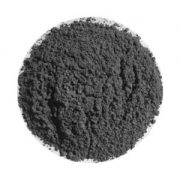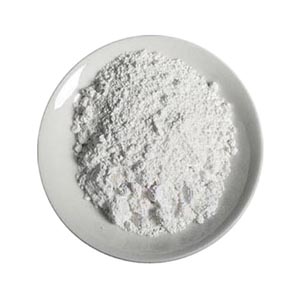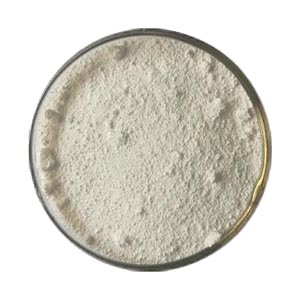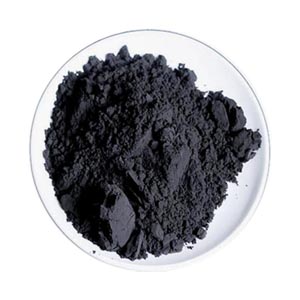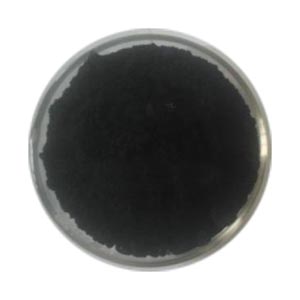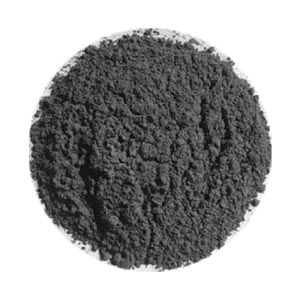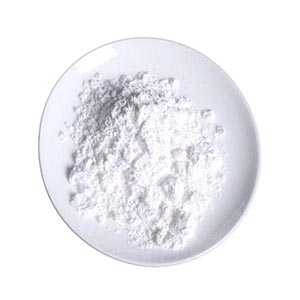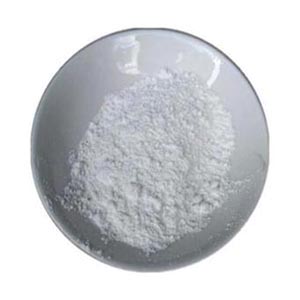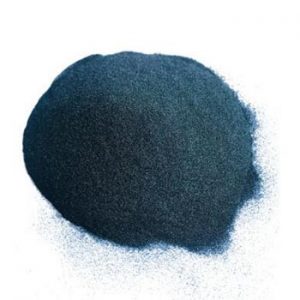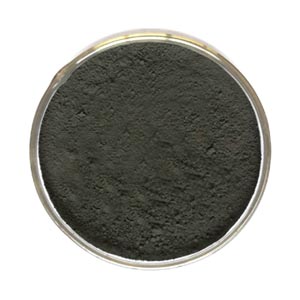
Cobalt silicide CoSi2
Particle size:325mesh
Chemical composition:
Co:51% Si:48.5%
Other impurity:0.5%
Chemical formula CoSi2. Molecular weight: 115.11. Dark brown trapezius crystal. Melting point 1277 ℃, Relative density 5.3. It can be oxidized at 1200℃ to erode its surface. Reacts with fluorine at low temperature; It reacts with chlorine at 300 degrees Celsius.
- 描述
- Inquiry
Corroded by hydrogen fluoride, dilute, concentrated nitric acid and sulfuric acid, it can also be melted Intense alkali erosion. Slow action with boiling hot concentrated hydrochloric acid. CoSi2 has low resistivity, Good thermal stability, it is widely used as contact in large scale integrated circuits. And CoSi2 has a crystal structure similar to Si, so it can form epitaxy on Si substrate CoSi2/Si structure used to study interface properties of epitaxial silicon metal. The nanostructure of the silicide is in
A number of fields of nanoelectronics also have potentially important applications: semiconductor silicide nanometers Structure (FeSi2) can be used to prepare nanoelectronic active devices in silicon-based nanoluminescent devices May have very important applications; Metallic silicides (CoSi2, NiSi2) can be futuristic The quantum computer, fault-tolerant Terahertz nanocircuit used in the computer as a nanowires, can be An epitaxial silicide conductor is prepared on a silicon substrate whose properties will be compared because there is no grain boundary Common metal nanowires are greatly enhanced; Metallic nanostructures can also be used in molecular electronics
A nanometer electrode of one or more molecules.
In the process of semiconductor components, the internal electrical connection points such as gate, source, or drain, Forming a low resistance layer of cobalt disilicate (CoSi2). Generally speaking, the manufacturing method of cobalt disilicate is first A layer of metallic cobalt (Co) is formed on a silicon-containing substrate, and two annealingtreatments are used to convert the cobalt to cobalt disilicate. Among them, the first annealing treatment It is shilling cobalt diffused into a siliceous substrate to form a layer of cobalt silicide (CoSi). The second annealing The treatment involves converting the cobalt silicate layer into cobalt disilicate with a low resistance to reduce the resistance of the component.
相关产品
-
Antimony oxide nano powder
Other name: Antimony trioxide, diantimony trioxide, Antimony(III) oxide
CAS no. : 1309-64-4; 1327-33-9
EINECS no. : 215-175-0; 215-474-6
Molecular formula: Sb2O3
Molecular weight: 291.517
Melting point: 656℃ (subl.)
Water solubility: Slightly soluble -
Antimony pentoxide
Other name: Diantimony pentoxide, Antimonic anhydride; 1,3-dioxodistiboxane 1,3-dioxide; antimonic acid
CAS no. : 1314-60-9
Molecular formula: Sb2O5
Molecular weight: 323.50
EINECS no. : 215-237-7
Relative density (water =1) : 3.78
-
Antimony telluride
Other name: Diantimony tritelluride, antimony(iii) telluride
CAS no. : 1327-50-0
Formula: Sb2Te3
Molecular weight: 626.32
Density: 6.5 g/cm3
Melting point: 620 ℃Purity: 99.99%
Particle size: 200 mesh
Appearance: grey powder
Forbidden band width: 0.23Ev
Resistivity: 3 * 10-6 Ω m.
Solubility: insoluble in water -
Chromium silicide
Other name: chromium disilicide
CAS no. : 12018-9-6
EINECS no. : 235-726-9
Molecular formula: H2CrSi2
Molecular weight: 110.183
Melting point: 1490 ℃
Density: 5.5 g/cm3
-
Chromium boride CrB
Other name:Chromium diboride
CAS no. : 12006-80-3
EINECS no. : 234-488-3
Molecular formula: C2H9Br
Molecular weight: 112.9969
Melting point: 1300 ℃
Density: 7.63 g/cm3 -
Nanometer Boron nitride
English alias: Boron Nitride Rod; nitriloborane
CAS no. : 10043-11-5
EINECS no. : 233-136-6
Formula: BN
Molecular weight: 24.8177
-
Antimony trifluoride
Other name: Antimony (III) fluoride
CAS no. : 7783-56-4
EINECS no. : 232-009-2
Molecular formula: F3Sb
Molecular weight: 178.7552
Molecular formula: SbF3
Molecular weight: 178.75
Density: 4.379
Melting point: 292 DHS C
Sublimation point :376 ° C
Boiling point: 376 DHS C
Water solubility :385 G/100 ML (20 ° C) -
Nano boron carbide
CAS no. : 12069-32-8
EINECS no. : 235-111-5
Molecular formula: B4C
Molecular weight: 55.25
Density: 2.51
Melting point: 2350 ℃
Boiling point: 3500 ℃

